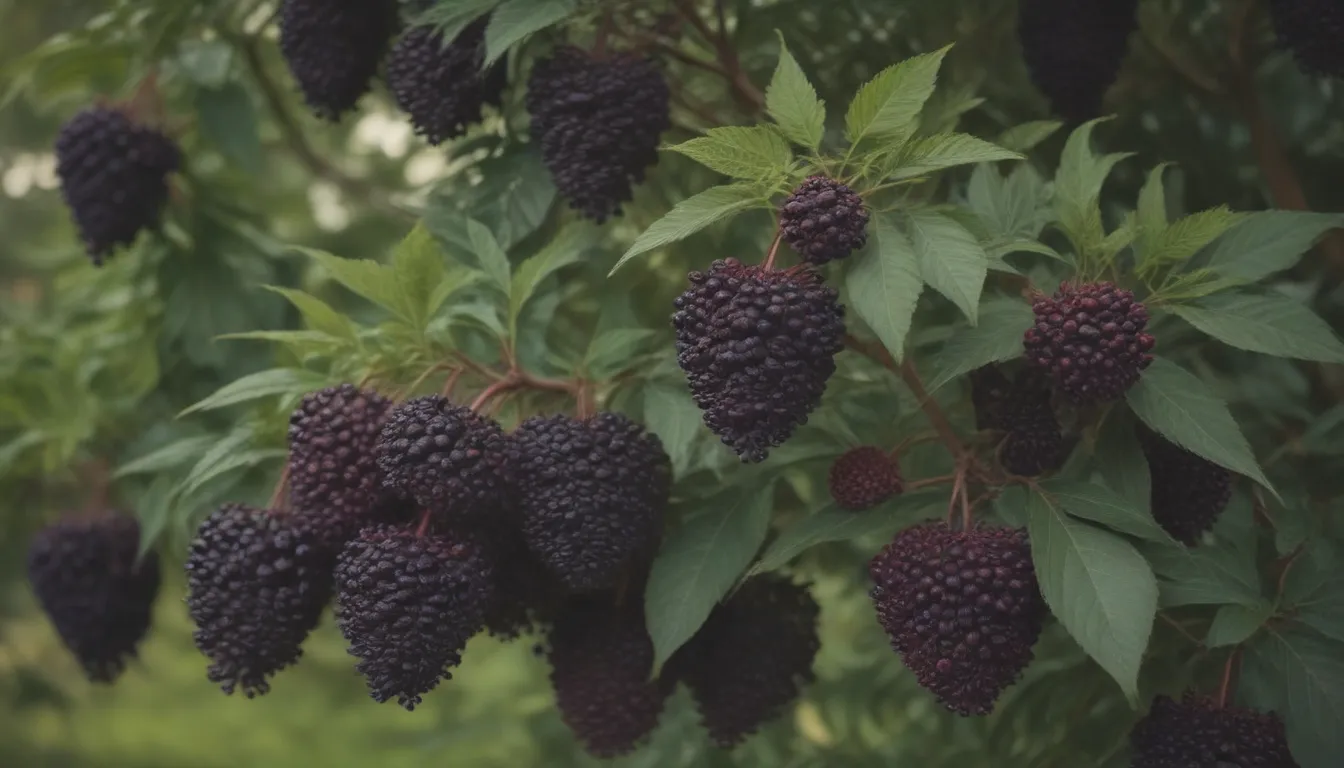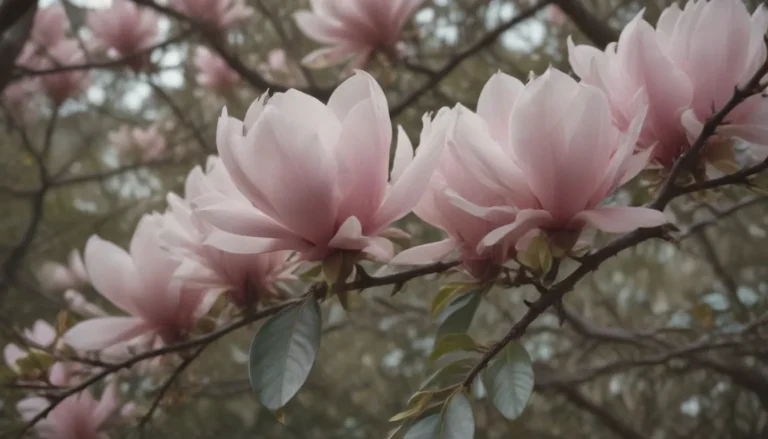The Ultimate Guide on Growing and Caring for Elderberry Trees

Are you looking to add a touch of beauty and functionality to your garden? Elderberry trees might just be the perfect addition! Despite their name, elderberries are actually shrubs that can bring both aesthetic appeal and practical uses to your outdoor space. In this comprehensive guide, we will explore everything you need to know about growing and caring for elderberry trees to ensure they thrive in your garden.
Getting to Know Elderberry Trees
Before diving into the nitty-gritty of planting and caring for elderberry trees, let’s take a moment to familiarize ourselves with these unique shrubs. Elderberry trees, scientifically known as Sambucus nigra, are easily recognizable by their serrated leaves that grow in clusters of three to nine on each stem. These shrubs have a moderate growth rate, reaching heights of 6 to 12 feet within the first few years.
One key point to remember is that elderberries are not safe for consumption in their raw form. They contain toxins that can be harmful to humans, dogs, and cats. Therefore, it’s essential to properly prepare elderberries before using them in culinary or medicinal applications.
Benefits of Elderberry Trees
- Beautiful foliage and fragrant flowers
- Edible berries for culinary use
- Medicinal properties for traditional remedies
Planting Elderberry Trees
When to Plant
When it comes to planting elderberry shrubs, timing is crucial. If you’re starting with nursery-grown plants, aim to plant them in the spring after the last threat of frost has passed, especially in northern regions of the United States.
Selecting a Planting Site
Elderberry trees are adaptable and can thrive in various environments. However, for optimal growth, choose a planting site that receives ample sunlight throughout the day. Full sun exposure not only promotes flower and fruit production but also enhances air circulation around the shrubs.
Spacing, Depth, and Support
Elderberry bushes have shallow, mat-like roots that require regular weeding to prevent competition from aggressive weeds. When planting multiple shrubs, ensure they are spaced 6 to 8 feet apart within a row and 10 feet between rows. Additionally, consider providing support for elderberry bushes, especially as they grow and produce heavier fruit loads.
Elderberry Tree Care Tips
To ensure your elderberry trees thrive and produce abundant flowers and berries, it’s essential to provide them with proper care and maintenance. Here are some essential care tips to help your elderberries flourish in your garden:
Light
Elderberries thrive in full sunlight, which supports optimal flower and berry production. While partial shade is acceptable, full sun exposure will result in the best outcomes for your elderberry shrubs.
Soil
Elderberry trees are adaptable to various soil types but prefer moist, well-drained, and moderately acidic soil conditions. Clay soil can be suitable as long as it is well-draining, while sandy soil may not retain enough moisture for optimal growth.
Water
During the summer months, elderberry shrubs require 1 to 2 inches of water per week to maintain adequate moisture levels. Newly planted shrubs may need extra watering due to their shallow root systems. Applying a layer of mulch around the base of the plants can help retain soil moisture and provide organic nutrients.
Temperature and Humidity
Elderberry trees are resilient and can tolerate a range of temperatures and humidity levels. However, they prefer cooler environments and may not thrive in excessively hot or humid conditions.
Fertilizer
While elderberries do not require fertilizer at planting, they may benefit from annual fertilization in the spring after their first year of growth. Younger plants may need nitrogen-rich fertilizer to stimulate growth, while older shrubs may require less nitrogen depending on their fruit production.
Pollination
Elderberries are primarily wind-pollinated, but manual cross-pollination can be beneficial for increasing fruit production. Planting different cultivars within close proximity can enhance pollination and fruit set in elderberry trees.
Types of Elderberry Trees
Elderberries encompass four main types, each with distinctive characteristics and uses. Understanding the different types of elderberries can help you choose the right variety for your garden and intended purposes. Some popular elderberry varieties include:
- American Elderberry
- European or Black Elderberry
- Red Elderberry
- Blue Elderberry
If you’re planning to grow elderberries for specific applications, such as culinary or medicinal use, consider selecting a suitable variety to meet your needs.
Harvesting and Pruning Elderberry Trees
Harvesting
Elderberries are typically ready for harvest in late summer to early autumn when they turn a dark purple/black color and become slightly soft. These berries are commonly used in various culinary creations, including jams, pies, syrups, and wines. Additionally, elderberry flowers can be harvested for potpourri mixes due to their pleasant fragrance.
Pruning
As elderberry shrubs mature, regular pruning is necessary to maintain optimal growth and fruit production. Remove older canes and deadwood in late winter to early spring to encourage new growth and prevent energy wastage. Additionally, keep an eye out for suckers and runners, and promptly remove them to prevent overcrowding in your garden.
Propagating Elderberry Trees
Propagating elderberry trees can be achieved through various methods, including seed dispersal by birds or manual cuttings. If you’re looking to propagate elderberries for specific planting locations or to create a hedge of shrubs, consider using cuttings to ensure genetic uniformity. Here’s a simple method for propagating elderberries using cuttings in water:
- Select healthy, young growth from the parent plant.
- Trim cuttings to include a node and remove any excess foliage.
- Place cuttings in a container of water, ensuring the nodes are submerged.
- Monitor the cuttings for root development before transplanting them into soil.
Common Pests and Plant Diseases
Elderberry trees are relatively resistant to pests and diseases compared to other plants. However, they may still be susceptible to aphids, mealybugs, elder shoot borers, scale, canker, leaf spot, and powdery mildew. Regular inspection and proper care practices can help prevent and manage pest and disease issues in elderberry trees.
Final Thoughts
In conclusion, growing and caring for elderberry trees can be a rewarding experience for gardeners of all skill levels. By following the tips and guidelines outlined in this comprehensive guide, you can successfully cultivate healthy and productive elderberry shrubs in your garden. Whether you’re seeking beautiful foliage, edible berries, or medicinal properties, elderberries offer a versatile and beneficial addition to any outdoor space.
Remember to provide adequate sunlight, well-drained soil, regular watering, and proper maintenance to ensure your elderberry trees thrive and flourish. With patience, dedication, and a bit of knowledge, you can enjoy the beauty and bounty of elderberries in your garden for years to come. Happy growing!





